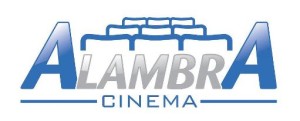I’ve two team pictures for pet and dog. And every group have 2000 images for pet and dog correspondingly.
My goal is make an effort to cluster the pictures by utilizing k-means.
Assume image1 is x , and image2 is y .Here we must gauge the similarity between any two pictures. what’s the way that is common determine between two pictures?
1 Response 1
Well, there a couple of therefore. write my essay lets go:
A – found in template matching:
Template Matching is linear and it is perhaps not invariant to rotation (really not really robust to it) however it is pretty robust and simple to sound like the ones in photography taken with low lighting.
It is simple to implement these OpenCV Template that is using Matching. Bellow there are mathematical equations determining a few of the similarity measures (adapted for comparing 2 equal sized pictures) used by cv2.matchTemplate:
1 – Sum Square Huge Difference
2 – Cross-Correlation
B – Image descriptors/feature detectors:
Numerous descriptors had been developed for pictures, their primary usage would be to register images/objects and seek out them in other scenes. But, nevertheless they feature plenty of details about the image and had been utilized in student detection (A joint cascaded framework for simultaneous attention detection and attention state estimation) and also seem it employed for lip reading (can not direct one to it since I’m not yes it had been already posted)
They detect points that may be thought to be features in pictures (appropriate points) the texture that is local of points and even their geometrical place to one another can be utilized as features.
You are able to find out more about any of it in Stanford’s Image Processing Classes (check handouts for classes 12,13 and 14, should you want to keep research on Computer eyesight we recomend you check out the entire program and perhaps Rich Radke classes on Digital Image Processing and Computer Vision for artistic Results, there’s a great deal of information there that can be ideal for this hardworking computer eyesight design you are attempting to simply take)
1 – SIFT and SURF:
They are Scale Invariant practices, SURF is really a speed-up and version that is open of, SIFT is proprietary.
2 – BRIEF, BRISK and FAST:
These are binary descriptors and they are really quick (primarily on processors having a pop_count instruction) and will be properly used in a comparable option to SIFT and SURF. Additionally, i have utilized BRIEF features as substitutes on template matching for Facial Landmark Detection with a high gain on rate with no loss on precision for the IPD plus the KIPD classifiers, so I don’t think there is harm in sharing) although I didn’t publish any of it yet (and this is just an incremental observation on the future articles.
3 – Histogram of Oriented Gradients (HoG):
That is rotation invariant and it is useful for face detection.
C – Convolutional Neural Sites:
I understand that you don’t would you like to utilized NN’s but i believe it really is reasonable to aim they have been REALLY POWERFULL, training a CNN with Triplet Loss may be very nice for learning a representative function room for clustering (and category).
Always check Wesley’s GitHub for an illustration of it is energy in facial recognition Triplet that is using Loss get features after which SVM to classify.
Additionally, if your problem with Deep Learning is computational price, it is possible to find pre-trained layers with dogs and cats around.
D – check into previous work:
This dogs and cats battle happens to be happening for the time that is long. you should check solutions on Kaggle Competitions (Forum and Kernels), there have been 2 on dogs and cats this 1 and therefore One
E – Famous Measures:
- SSIM Structural similarity Index
- L2 Norm ( Or distance that is euclidean
- Mahalanobis Distance
F – check into other form of features
Dogs and cats could be a simple to recognize by their ears and nose. size too but I experienced cats as huge as dogs.
so not really that safe to utilize size.
You could take to segmenting the pictures into pets and history and try to do then area home analisys.
For those who have enough time, this guide right here: Feature Extraction & Image Processing for Computer Vision from Mark S. Nixon have much information on this sort of procedure
You can test Fisher Discriminant review and PCA to produce a mapping additionally the evaluate with Mahalanobis Distance or L2 Norm

